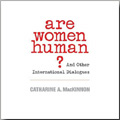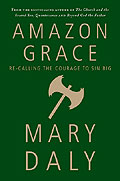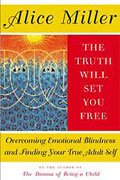When Mel Gibson's The Passion of the Christ first released, I was asked if I was going to see the film to which I retorted, "No, it's heresy. Masters do not suffer," a reaction of anger at the glorification of the suffering of Christ. If one believes in the New Testament stories--Jesus who raised the dead, Jesus who walked on water, Jesus who worked all manner of miracles--how can one logically deduce that Jesus suffered greatly on the cross? What kind of Father God would demand such agony? And why embrace the crucifixion as a tribute to Jesus when his life (not his death) offers so much more appropriately attuned narratives for believers to eulogize and edify?
For now, I'll set aside textual disputes and contradictions between the Gospels only to briefly cite Bart Ehrman from Misquoting Jesus, page 142:
. . .while Luke's source, the Gospel of Mark, portrays Jesus in anguish as he prays in the garden, Luke has completely remodeled the scene to show Jesus at peace in the face of death. The only exception is the account of Jesus's "bloody sweat," an account absent from our earliest and best witnesses. Why would Luke have gone to such lengths to eliminate Mark's portrayal of an anguished Jesus if in fact Jesus's anguish were the point of the story?
It is clear that Luke does not share Mark's understanding that Jesus was in anguish, bordering on despair....
. . .Nowhere is this more evident than in their subsequent accounts of Jesus's crucifixion... [Mark's account] stands in sharp contrast to what we find in Luke. In Luke's account, Jesus is far from silent, and when he speaks, he shows that he is still in control, trustful of God his Father, confident of his fate, concerned for the fate of others.
So the question remains. Why glorify the death and suffering of Jesus? Rev. Irene Monroe at The Witness provides awe-inspiring answers and they supply us with insights into today's false hegemony of guilt, shame, sacrifice, and a valorization of suffering and abuse:
Mel Gibson's The Passion of the Christ has no compassion for those of us relegated to the margins. I am not too certain that the film has any love for Christ, either.
It would be an egregious omission to gloss over the unrelenting violence that took place during Jesus' time, especially in light of the ongoing violence in today's society toward people of color, women, Jews, Muslims, and lesbian, gay, bisexual and transgender people. However, the deification of violence as depicted in the film as redemptive suffering has deleterious implications that are not-so-benignly played out today from the playground to the courtroom.
Also, the film desensitizes killing, giving rise not only to a cavalier attitude to kill those who pose a physical threat to our lives, but also to a self-righteous attitude to kill those who are believed to pose social and political threats to the status quo.
So much of the opposition to same-sex unions is intrinsically tied to a religious belief held by many Christian evangelical heterosexuals. They will by any means possible -- and violence is not excluded -- oppose any bill sanctioning such a union, because their fight is not only just, but it is also redemptive. And many of these Christian evangelical heterosexuals believe that if Christ can suffer as he did up the hill to Golgotha at Calvary, so too can they, as they make their way up to Beacon Hill in Boston to save the sanctity of marriage.
The notion, therefore, of equating violence to redemptive suffering is not only bad theology, but is also a bad paradigm to demonstrate how God, who so loved the world that he offered up his only begotten son to save all of humanity, sacrificed in the form of a sado-masochistic flogging.
Rev. Irene says so much in these few paragraphs that I am astounded that a vast contingency of Christian evangelicals dismiss the ultimate truth, the message--do not crucify, do not judge or condemn, do not harm another of God's children but instead love, help each other, and treat each other as "you would have them do unto you." No amount of distortion and obfuscation can justify the condemnation of any minority based on the teachings of Jesus. Ever. To correct the error, Rev. Monroe explains that we have not grasped the forces underpinning Christ's crucifixion:
However, without the contextualization and accountability of the violence enacted upon Jesus, the cycle of violence continues. As a figure that has dominated Western culture and Christianity for over 2,000 years, too little attention is paid to Jesus' death. If more focus was spent on the reasons for his death and the systems of oppression that brought about his demise, violence against marginalized people would cease to exist.
By focusing on the death of Jesus and how justice might be adjudicated from it, we are forced to remember history. In the year 33 A.D., Jesus was unquestionably a religious threat to conservative Jews because of his iconoclastic views and practice of Jewish Law, and viewed as a political threat to the Roman government simply because he was a Jew.
So, too, today, political and religious factions who wail about being persecuted themselves oppress in continuing a legacy of marginalizing minorities. I daresay some Christians have sown their seeds upon stony ground, among thorns, and on the way-side of fear, violence, ignorance, and complacency. Artistically, I agree with Rev. Irene that we have not fully incorporated the reasons behind Jesus' crucifixion, which I attempted to articulate in my faggot crucifxion:
Artistically, I agree with Rev. Irene that we have not fully incorporated the reasons behind Jesus' crucifixion, which I attempted to articulate in my faggot crucifxion:
Look at the word FAGGOT on the cross. You could substitute the word NIGGER, JEW BOY, HONKIE, REDNECK or BITCH—it all means the same. Anytime anyone rises up in condemnation, hatred or violence against another, Christ is [once again] crucified.
I chose the word FAGGOT because today, gays are socially-acceptable and religiously-justifiable targets for hate. And, just like gays, Jesus was made a hate target in his time because he dared to be different, to tell his understanding of the truth even though his words and his position defied the religious establishment.
Who thinks the placard that bore the phrase, King of the Jews, upon the cross at Calvary was anything but a mockery? Who now dares to mock another child of God as a faggot? What justice permits the vilification and segregation of gays as less than equal citizens so deplorably perpetrated in the name of God? Is such an action an act of love or a reaction to fear? A rising chorus within the psychiatric, psychological, and sociological communities plus some religious denominations have concluded that irrational fear belies such behavior.
In 1993, I completed the crucifixion painting as the Clinton Administration capitulated to congressional homophobes in declaring "Don't Ask, Don't Tell" apartheid of gays in the military. I did not realize the artwork prophesied bloodier scenarios. Rev. Monroe describes a year of "haterati" at its ugliest in 1998. An African-American boy named Emmett Till was lynched, James Byrd Jr. was heinously murdered in East Texas, and gay Matthew Shepard was beaten and tied to a wooden fence, a "cross" of sorts where he was left to die--all hate crimes due to what I would describe as a pervasive culture of violence and bigotry aimed at the Other, the minority. Other examples abound from the 1990s to present, from here in the U.S. to the prisons of Abu Ghraib, Camp Bucca, and elsewhere in Iraq. Also...
During the summer months of 1998, the country was hit with the explosion of "ex-gay" ministry ads that appeared in major newspapers like The New York Times, The Washington Post, and USA Today. The ads were sponsored by a coalition of 15 right-wing Christian organizations calling all lesbian, gay, bisexual and transgender people to convert to heterosexuality.
Let me offer right now use of my faggot crucifixion to any organization who would like to reproduce it on a billboard or in an ad to challenge and protest the misuse of Jesus' teaching. Let the message reflect, they know not what they do but we will no longer tolerate bigotry masquerading as God's justice!
Not once did Christ condemn his gay brothers and sisters and perhaps he had a secret in living the down low. The Pauline text so often quoted to justify the alleged sin of man-on-man sex is hotly debated, yet are we to believe that lesbianism is OK? Ha! Few laypeople understand that scribes occasionally altered Scriptures to fit a prevalent religious bias as was done to limit women's roles in the church. Furthermore, we do not have the original manuscripts. Yes, that's right. Biblical textual scholars tell us we do not have one original manuscript of the Gospels. Instead, we have thousands of derivatives and each differ one from another. So much for the inerrant Word of God. What folly it is to take the Bible literally. And yet, Jesus' ministry and his teachings we can fully understand with a few words--love, forgiveness, compassion, and treating each other respectfully--which uplifts and redeems while a bloodshed theology, as Rev. Irene describes it, denigrates:
For those of us on the margins, a Christology mounted on the belief that "Jesus died on the cross for our sins" instead of "Jesus died on the cross because of our sins" not only deifies Jesus as the suffering servant, but it also ritualizes suffering as redemptive. While suffering points to the need for redemption, suffering in and of itself is not redemptive, and it does not always correlate to one's sinfulness. For example, the belief that undeserved suffering is endured by faith, and that it has a morally educative component to it makes the powerful insensitive to the suffering of others and it forces the less powerful to be complacent to their suffering - therefore, maintaining the status quo.

Jesus' suffering on the cross should never be seen as redemptive any more than the suffering of African-American men dangling from trees in the South during Jim Crow America. The lynchings of African-American men were never as restitution for the sins of the Ku Klux Klan, but were, instead, because of their sins that went, for decades, unaccounted for (until the 1951 Federal Anti-Lynching Act was passed). In other words, Jesus' death on the cross and the lynching of African-American are synonymous experiences.
As a deeply controversial icon in Christian liberation theologies for many feminists, womanists, African Americans, and lesbian, gay, bisexual and transgender people, the cross is the locus of redemption insofar as it serves as a lens to critically examine and make the connections between the abuses of power and institutions of domination that brought about the suffering Jesus endured during his time to the abuses of power and institutions of domination that brings about the suffering which women, people of color and sexual minorities are enduring in our present day.
When suffering is understood as an ongoing cycle of abuse that goes on unexamined and unaccounted for, we can then begin to see its manifestation in systems of racism, sexism, classism and heterosexism in our everyday lives. With a new understanding about suffering and how it victimizes the innocent and its aborts the Christian mission of inclusiveness, Jesus' death at Calvary invites a different hermeneutic than its classically held one.
Lesbian, gay, bisexual and transgender people suffer because of well-intended heterosexual Christians' unexamined and unaccounted for acts of homophobia. When these Christians say they love us as sinners, but hate our supposed sin, they are maintaining an unexamined and unaccounted for cycle of spiritual abuse.
Many Christians do not realize that with the classical view of the cross held by many conservatives in their denominations as the exaltation of Jesus as male, Jesus as white, and Jesus as heterosexual, this view not only disinvites the many faces of God that should appear on the cross with Jesus, but it also disinvites solidarity among diverse groups of people who do suffer.
Yes, a different hermeneutic is exactly the need of the hour. To mature spiritually and morally, to progress as a fruitful nation and a beacon for democracy, we must no longer excuse the Dobsons, the Falwells, and the erroneous proposition, to paraphrase Monroe, that Jesus died for our sins when he was crucified because of sin. Therein lies redemption in not only accounting for racism, sexism, homophobia, xenophobia, and any -ism or phobia that excludes one member from the family of humanity, but calling those to account for repeating the sin and promoting it as if it were the truth.
UPDATE: Matt Comer really gets what the painting of The Crucifixion of Christ is about:Because this message is so strong, it transcends lines of faith and lines of belief. Whatever you do to “the least” of our world’s family, you do to God… and you do to Jesus. If you aren’t the religious type, the message is similar: Whatever you do to “the least” of our world’s family, you do to someone else… for each person is inextricably bound to another; we are all interconnected and interdependent upon each other. When one is hurt, all are hurt. As Wilbur depended on Charlotte and her web, we all depend on each other for life, for joy, for happiness & survival… a huge web of humanity.
Whatever you do to “the least,” you do also to Christ. This painting is such a perfect portrayal of this teaching.
























|